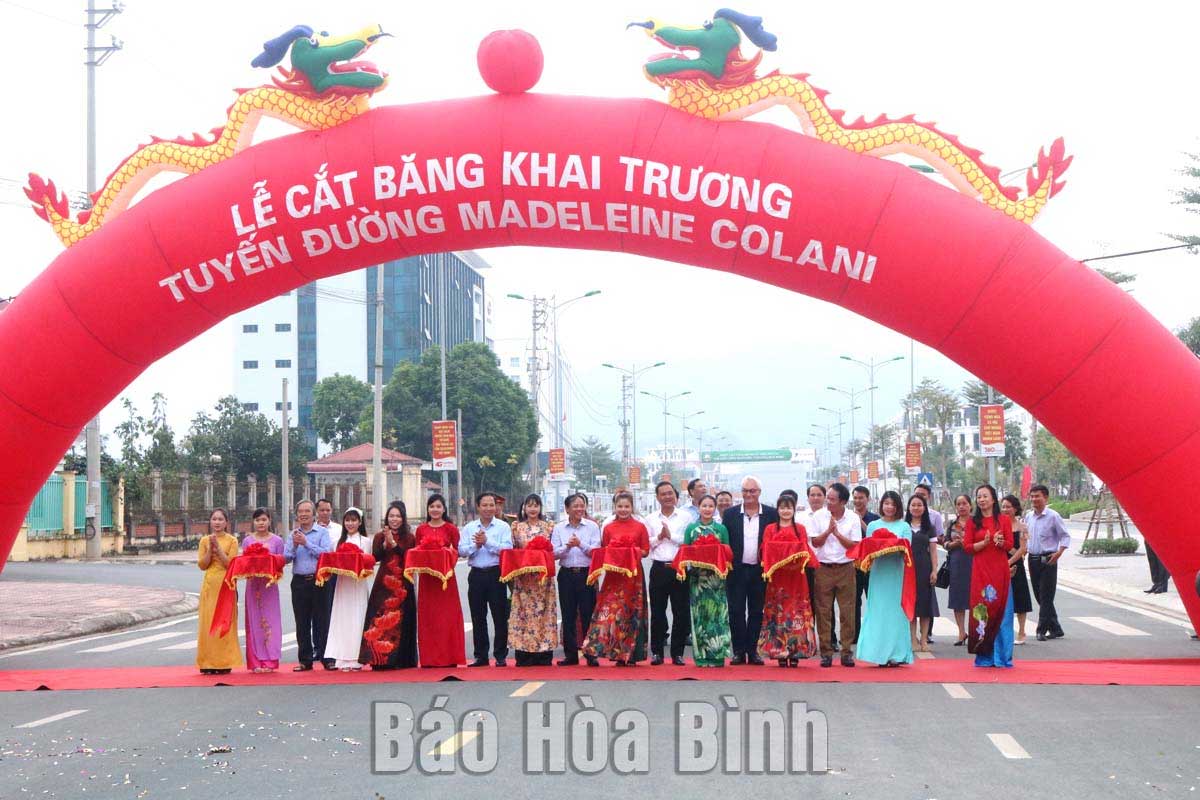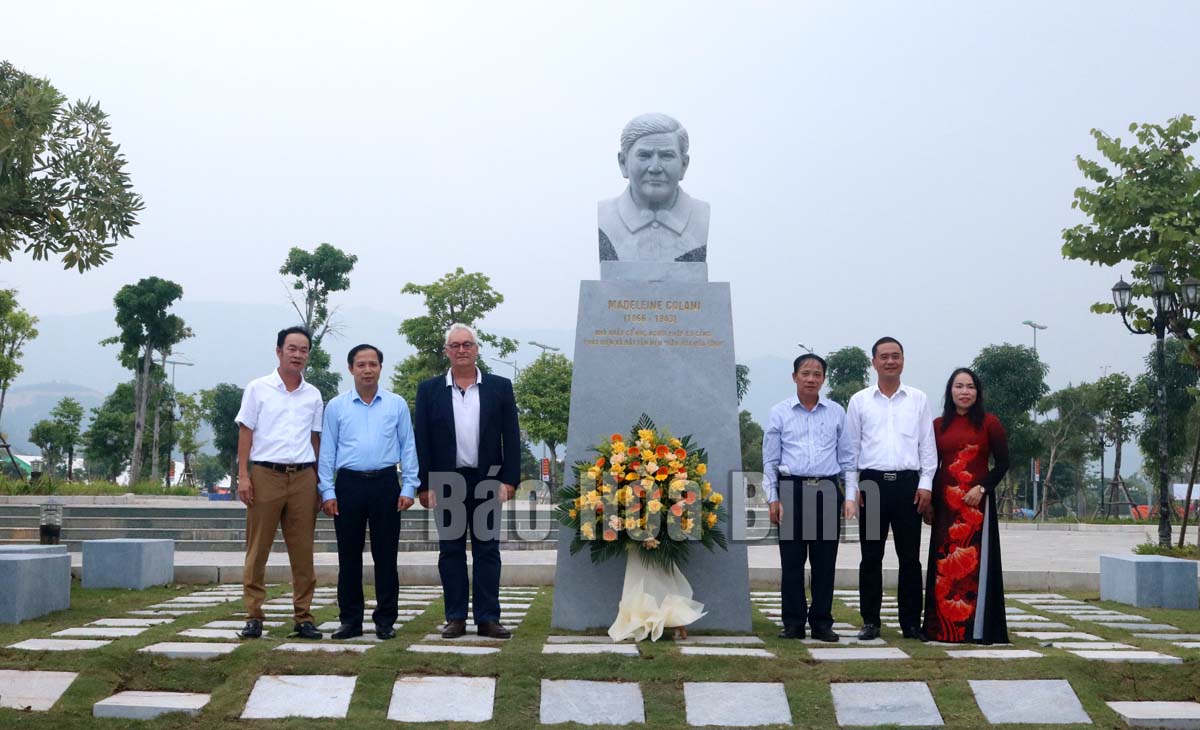
(HBO) - In the afternoon of November 22, the People's Committee of Hoa Binh City held a ribbon-cutting ceremony to open the route named after French archaeologist - Ms. Madeleine Colani. Mr. Van Khanh, the Deputy Secretary of the Provincial Party Committee, the Chairman of the Provincial People's Committee, Mr. Nguyen Van Toan, the Vice Chairman of the Provincial People's Committee. Dr. Philippe LE FAILLER, the Chief Representative of the Institute of the French Far East in Vietnam attended the ceremony.
Mr. Bui Van Khanh, the Deputy Secretary of the Provincial Party Committee, the Chairman of the Provincial People's Committee and the delegates were cutting the ribbon to inaugurate the route named after French archaeologist - Ms. Madeleine Colani.
The archaeologist, Madeleine Colani, was born in 1866, is a geologist, a paleontologist and an archaeologist, who has made great contributions to the formation and development of Vietnam's archeology in particular and Indochina archeology in general. From 1926 to 1932, her survey space was the limestone mountains of Hoa Binh, Ninh Binh, Thanh Hoa, Quang Binh provinces. Ms. M. Colani discovered and excavated 54 Hoa Binh cultural sites in the North of Vietnam, in which most of the sites are located in Hoa Binh province… Ms. M. Colani is the person who has pioneered in discovering and researching "Hoa Binh Culture”.
Mr. Bui Van Khanh, the Deputy Secretary of the Provincial Party Committee, the Chairman of the Provincial People's Committee, Mr. Nguyen Van Toan, the Vice Chairman of the Provincial People's Committee and other delegates took photos at the bas-relief of the French archaeologist, Ms. Madeleine Colani.
Route QH7 is 450m long, 35m wide, the first point is adjacent to the roundabout at Hoa Binh Square; the end point is adjacent to QH8 road, Quynh Lam ward (Hoa Binh city). This is a work to celebrate the 90th anniversary of the world's recognition of "Hoa Binh Culture” (1932 - 2022), with a view to propagating, promoting, introducing and honoring the unique archeological cultural values of the world-famous stone age culture in Hoa Binh homeland. It was to honor the contributions of Mrs. M. Colani who had the merit of discovering and naming " Hoa Binh culture:...
At the ceremony, the delegates reviewed the meaning and historical value of Hoa Binh Culture and the contribution of Ms. M.Colani; cutting the ribbon to open the route named after the French archaeologist; visiting the route and bas-relief of the French archaeologist - Mrs. M. Colani.
The Standing Board of the Hoa Binh provincial Party Committee has agreed in principle on a proposal by the Standing Board of the Party Committee of Hoa Binh city to gather feedback on the city’s 1:2000 zoning plan, which forms part of its broader urban development strategy.
Hoa Binh province has made notable progress in public administration reform and digital government development, with the satisfaction index among citizens and businesses reaching over 84%, according to recent government evaluations.
Thanks to great efforts by local authorities in recent times, the governance and public administration performance of Mai Chau district has been significantly improved.
In the afternoon of June 6, the Party Committee, the People's Council, the People's Committee and the Fatherland Front of Lac Son district solemnly held a meeting to celebrate the 139th anniversary of the district's founding (1886–2025) and the 79th anniversary of the establishment of the district's Party Committee (1946–2025). There was the attendance of Mr. Bui Van Thang, the Vice Chairman of the Provincial People's Council; Mr. Quach Tat Liem, the Vice Chairman of the Provincial People's Committee; Ms. Dang Bich Ngoc, the Deputy Head of the National Assembly Delegation of the province; as well as the former leaders of the province and district through various periods, who are the natives of the district.
Implementing the Politburo’s Resolution No. 57-NQ/TW on breakthroughs in science – technology, innovation, and digital transformation is a golden opportunity for the northern mountainous province of Hoa Binh to renew growth model, improve competitive edge and shorten digital gap.
Resolution 57-NQ/TW, issued by the Politburo on December 22, 2024, identifies sci-tech, innovation, and digital transformation as strategic breakthroughs to build a developed and prosperous nation. In Hoa Binh province, this spirit is not just a slogan, it’s being put into action through concrete initiatives that form a "new development triangle”: digital citizenship, digital economy, and digital administration.




